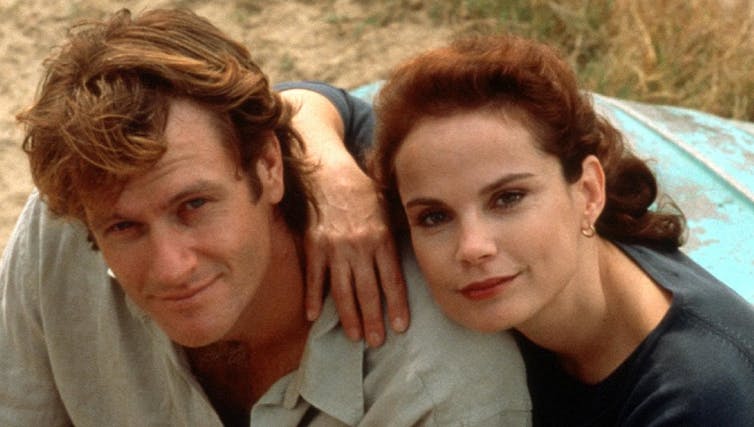The new Seachange is a sad case of Zombie TV: when your favourite programs come back from the dead
Reboots like Beverly Hills 90210, Twin Peaks, Arrested Development, X-Files, Will & Grace and Roseanne are examples of unimaginative TV networks trying to outmanoeuvre each other in the ratings race. And now, we can add Seachange to that list, explains Daryl Sparkes in this crossposting from The Conversation.
In Stephen King’s Pet Sematary, caretaker Jud Crandall warns against burying bodies in the old Indian burial ground. “They don’t come back the same”, the old man drawls, with a mix of desperation and horror in his voice.
If only television executives heeded this same advice.

William McInnes and Sigrid Thornton in the original series. Could a new Seachange possibly capture the romantic tensions of the original?
ABC
Around the globe, recent reboots of some long loved, long dead, television programs highlight the unimaginative strategies studios are employing to out-manoeuvre each other in the race for higher ratings. Hitting our screens again of late have been the exhumed corpses of Beverly Hills 90210, Twin Peaks, Arrested Development, X-Files, Will & Grace and Roseanne, among others.


Can’t comment on the specific show because I watched neither the original or the re-make, but the general point stands.
We live in an age where broadcasters and filmakers are averse to making content from new IPs. Presumably because trying new things is risky. However long term this is one of the (one of many) reasons audiences are dying and the best writers are going to the gaming world (well that and the money).
I think that filmmakers and TV producers are VERY keen to make new content.
However, the backers (which includes state and Federal bodies), along with the broadcasters seem to be fixated on formats and content that has a proven track record, along with slashing production budgets.
Shows like this are so out of step with modern Australia, it makes your head spin.
It’s like everyone involved lives in Bondi and the Northern Beaches… oh… hold on…
Bit like how Downton Abbey allows a certain slice of British (and colonial) society to wallow in the fantasy of monoculture in which the riff riff know their place/station, these “Aussie” rehashes do the same.
Less of this moving forwards, after it crashes and burns.
To the whingers, naysayers and killjoys out there, let me politely remind you that Seachange is a quirky, light hearted and good fun show. Stop expecting miracles, engage and enjoy the ride.
It’s a revived comedy that is quirky. The characters are himan with very human frailties. The first series had more depth but with only six episodesso far l want to see where this is going. I watched the original series and enjoyed it, l for one can handle an update.
It’s a revived comedy that is quirky. The characters are himan with very human frailties. The first series had more depth but with only six episodesso far l want to see where this is going. I watched the original series and enjoyed it, l for one can handle an update.